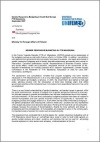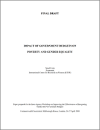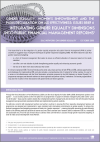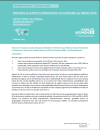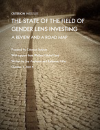Since the start of the COVID-19 pandemic, almost USD 16 trillion has been pumped into the global economy, and governments are now rolling out second and third ph
FOUND 10
This fact sheet was produced by UNIFEM in 2007 under the UNIFEM sub -regional programme "Gender-Responsive Budgeting in South East Europe: Advancing Gender Equality and Democratic Governance through Increased Transparency and Accountability launched in late 2006.
This paper provides guidance on how to make Public Finance Management (PFM) reforms gender responsive. It presents an overview of PFM reforms and explains how and why they are important to the achievement of gender equality outcomes.
In this paper, Simel Esim (2000) focuses on expenditure and revenue instruments of fiscal policy as strategic entry points for engendering macroeconomics. The paper also includes a discussion of the potential implications of monetary policy and overall fiscal stance on poverty and gender equality.
This Issues Brief published by the DAC NETWORK on Gender Equality in October 2010 is on the integration of a gender equality perspective into public financial management (PFM) in partner countries. It suggests ways of using the techniques of gender-responsive budgeting (GRB).
This paper explains what GRB is, what GRB work has help achieved and how it can further contribute to achieving gender equity and equality.
UN Women Policy Brief: Reforma Impostu Rendimentu no Konsumu ba Timor-Leste
This report (2015) tells the history of the field of gender lens investing over the last five years and outlines a roadmap to the future, defining the critical areas of focus for resources and attention.
This book aims to contribute to the evolving understanding of public expenditure management as a political, rather than a purely technical, process. In particular, it explores the ways in which a rights approach can contribute to strengthening pro-poor voice and outcomes in budget processes.

